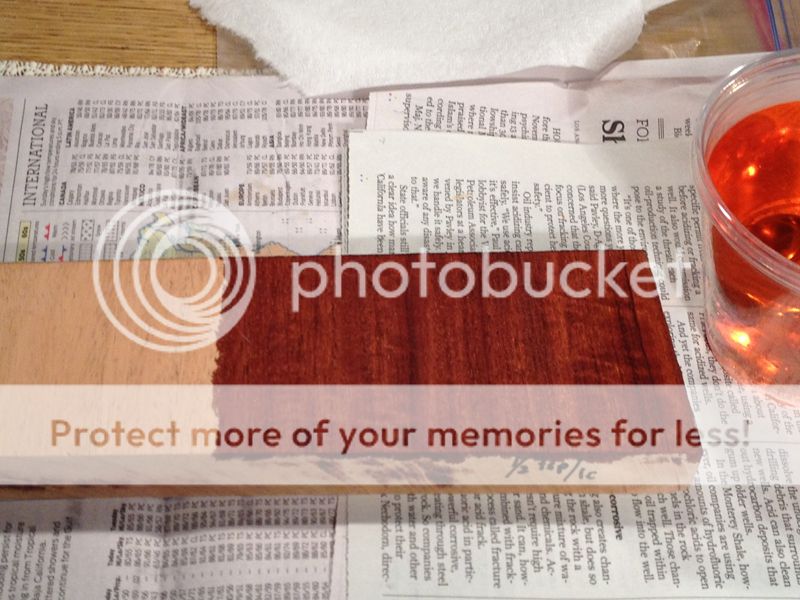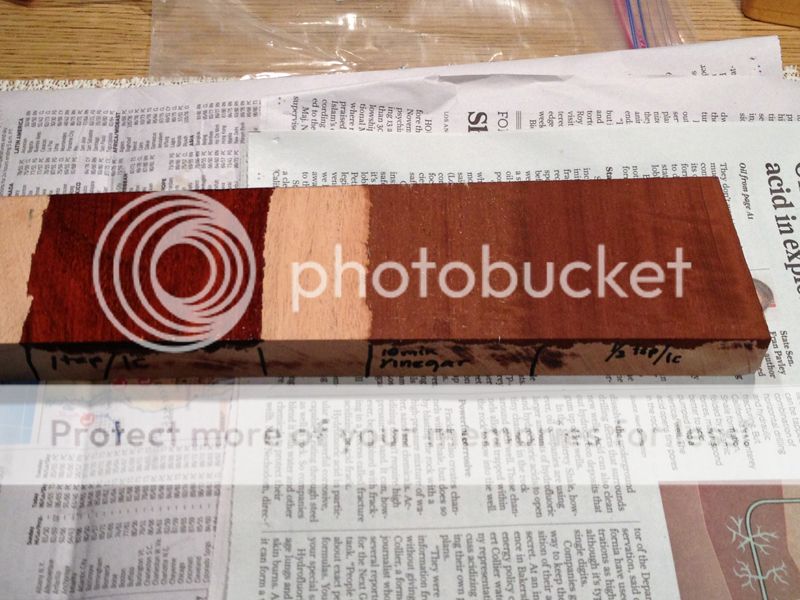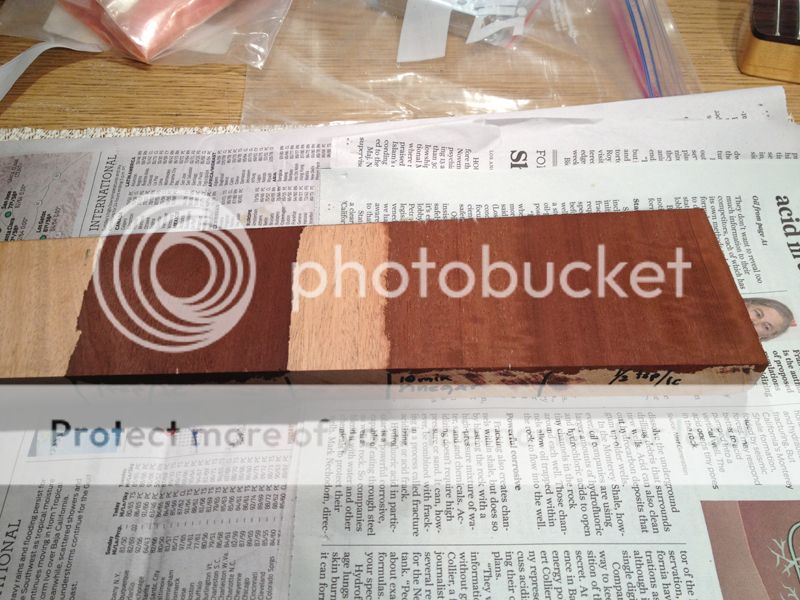Thanks to the unending generosity of Cagey, I've been doing some experiments with that toxic orange stuff: K2Cr2O7.
Using some scrap from my mahogany jaguar project, I mixed up a cup of warm water with a half teaspoon of dichromate. This was applied to the mahogany in a wide stripe, until it was quite wet.
In 10 minutes, I took this picture:

I then wiped half of that treated area with rice vinegar, and mixed in another half teaspoon of Dichromate into my 1c of water, giving me a concentration of about 1tsp/ 1c.
10 minutes later, it looked like this...

An hour later, everything had mostly dried, giving it a look like this...

Clearly, the vinegar had indeed stopped the process at 10 minutes, where the untreated areas continued to darken. The Dichromate really brought some contrast to the grain, in addition to darkening it. I'm going to give it a light sand when it's really dry, and shoot a coat of crappy lacquer over it to see what it gets. I expect I'll wish it were a little redder, which might be doable with either a drop of red stain in the dichromate (might blow myself up! :icon_tongue , or perhaps a touch of red dye in the lacquer.
, or perhaps a touch of red dye in the lacquer.
Using some scrap from my mahogany jaguar project, I mixed up a cup of warm water with a half teaspoon of dichromate. This was applied to the mahogany in a wide stripe, until it was quite wet.
In 10 minutes, I took this picture:

I then wiped half of that treated area with rice vinegar, and mixed in another half teaspoon of Dichromate into my 1c of water, giving me a concentration of about 1tsp/ 1c.
10 minutes later, it looked like this...

An hour later, everything had mostly dried, giving it a look like this...

Clearly, the vinegar had indeed stopped the process at 10 minutes, where the untreated areas continued to darken. The Dichromate really brought some contrast to the grain, in addition to darkening it. I'm going to give it a light sand when it's really dry, and shoot a coat of crappy lacquer over it to see what it gets. I expect I'll wish it were a little redder, which might be doable with either a drop of red stain in the dichromate (might blow myself up! :icon_tongue




